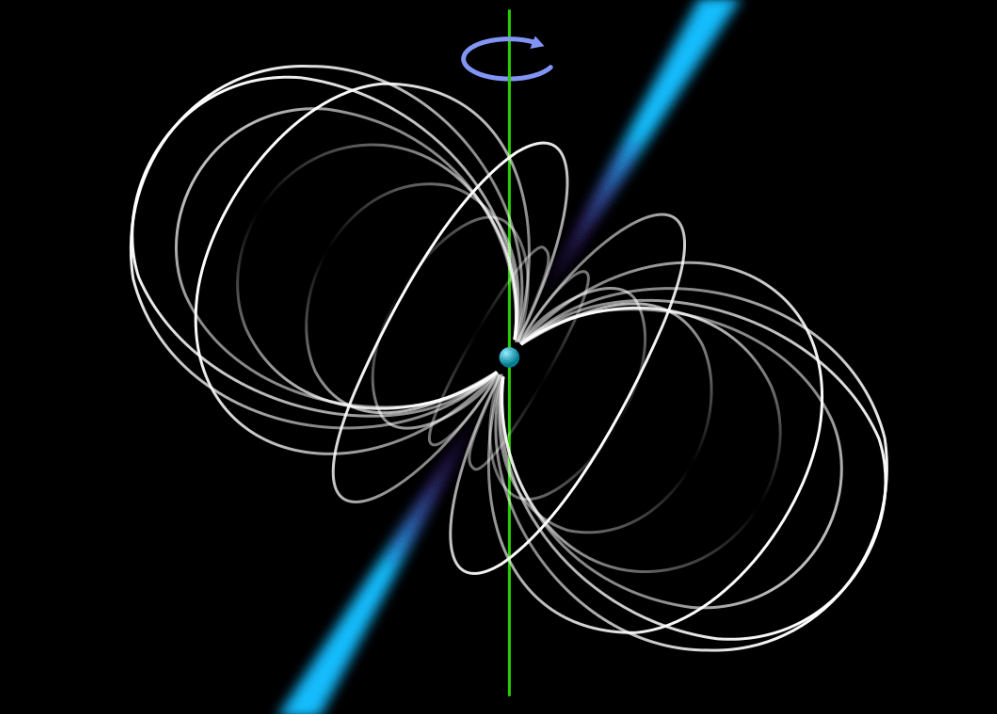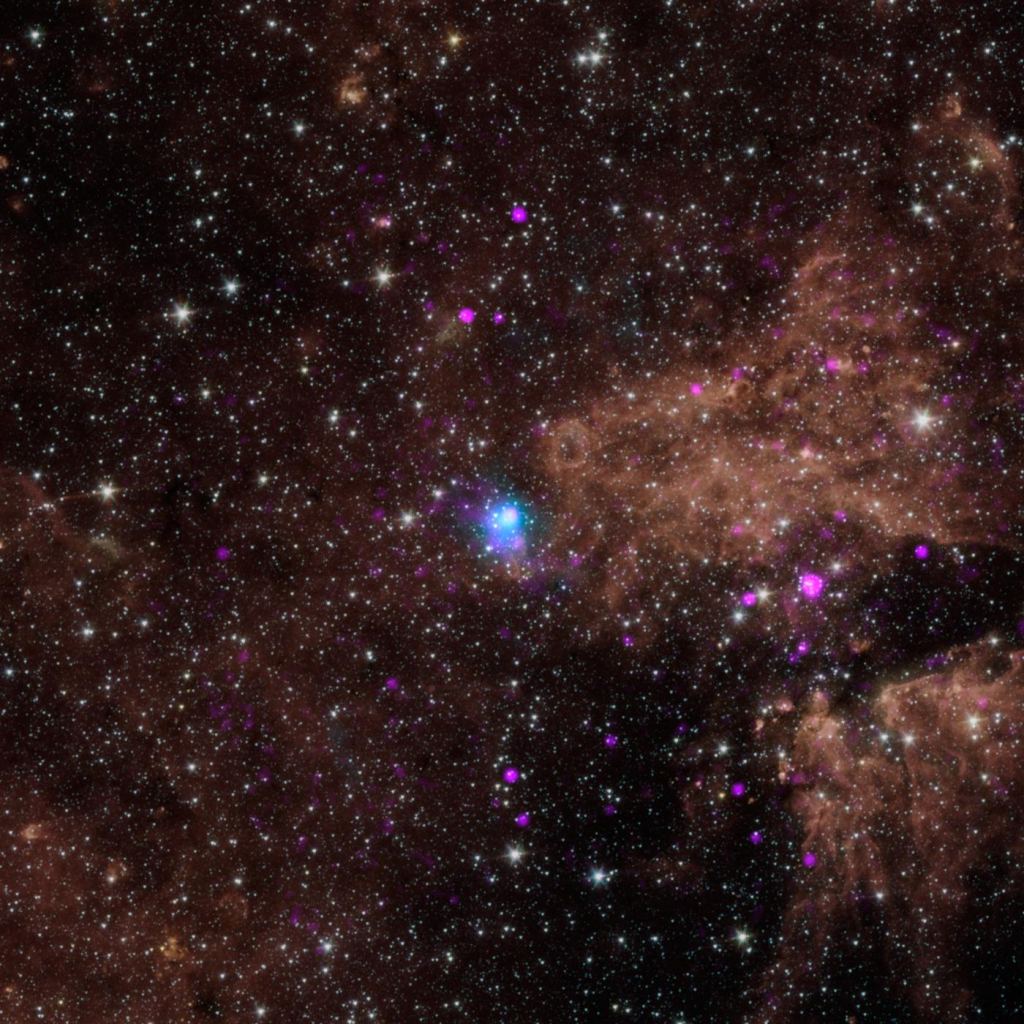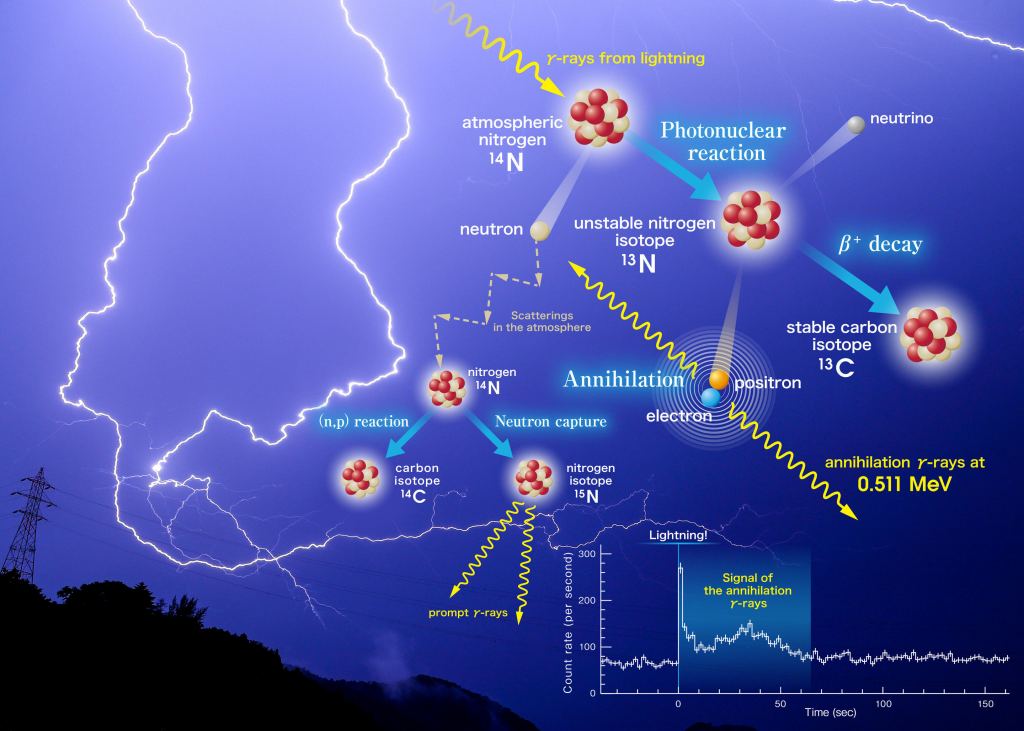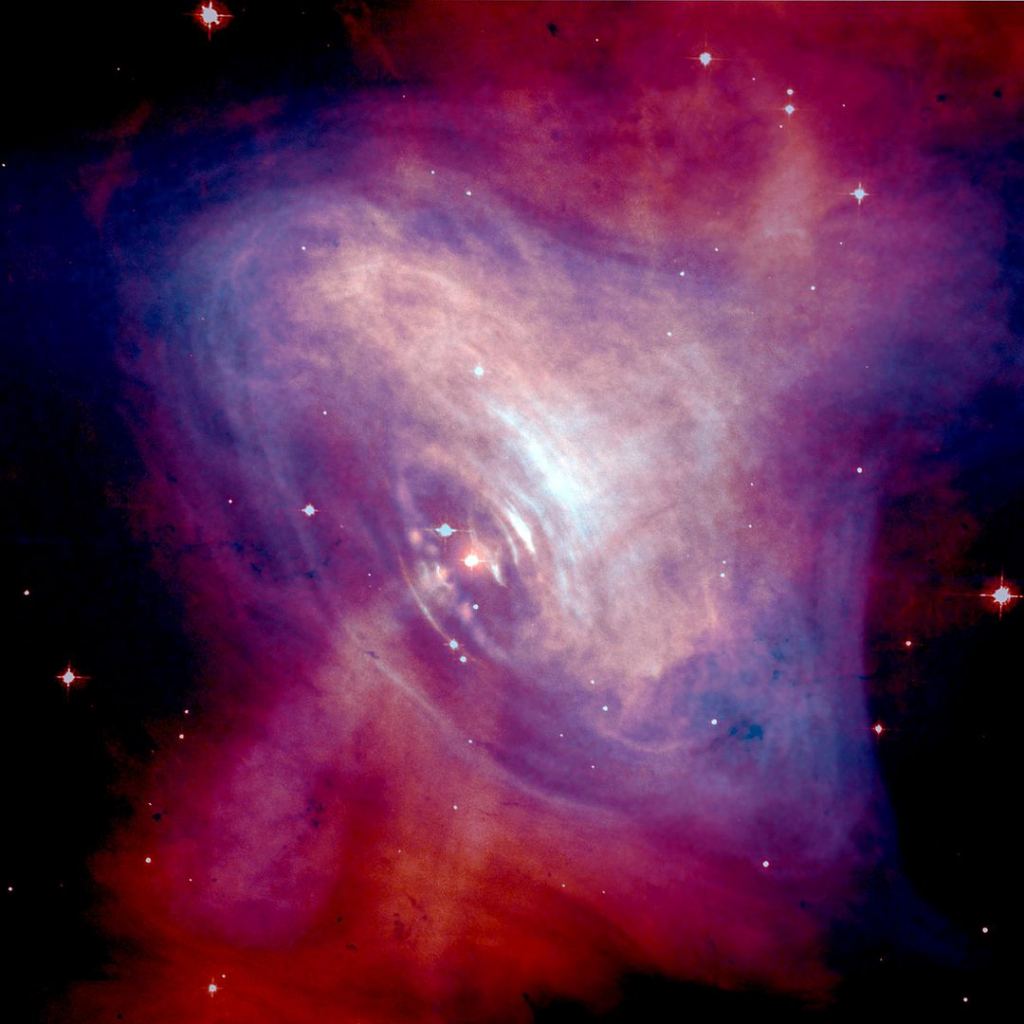When pulsars were first discovered in 1967, their rhythmic radio-wave pulsations were a mystery. Some thought their radio beams must be of extraterrestrial origin.
We’ve learned a lot since then. We know that pulsars are magnetized, rotating neutrons stars. We know that they rotate very rapidly, with their magnetic poles sending sweeping beams of radio waves out into space. And if they’re aimed the right way, we can “see” them as pulses of radio waves, even though the radio waves are steady. They’re kind of like lighthouses.
But the exact mechanism that creates all of that electromagnetic radiation has remained a mystery.
A team of researchers may have figured out how it all works. It has to do with gamma rays, electrons and positrons, and oscillating electric fields.
A new letter titled “Origin of Pulsar Radio Emission” presents these new results. The lead author of the paper is Alexander Philippov, an associate research scientist at the Flatiron Institute’s Center for Computational Astrophysics. The work is published in the American Physical Society’s Physics journal.
It all starts with the neutron star at the center of the pulsar.
When a massive star, between 10 and 29 solar masses, collapses and explodes as a supernova, it leaves a neutron star behind. A neutron star undergoes no further fusion, and becomes dominated by intense gravity. The powerful gravity overwhelms the atomic bonds in the star, crushing almost everything into neutrons. But the neutron star retains something important from its progenitor star: the rotational force.
Now, the neutron star has much less volume(and mass) than its progenitor, and like a figure skater who pulls their arms in while spinning, the spin rate increases. It’s called the “conservation of angular momentum,” a concept that comes up repeatedly in astronomy and astrophysics.
So now we have a neutron star that’s spinning hundreds of times a second. That rapid rotation creates very powerful electrical fields, the most powerful ones we know of, which tear electrons from the star’s surface. Those same fields accelerate those electrons to high velocities.

The electrons are accelerated so powerfully that they emit gamma radiation. But the pulsar also has an extremely powerful magnetic field, and that field re-absorbs the gamma rays. That re-absorption produces another flood of plasma consisting of electrons and their anti-matter counterparts, positrons. That plasma then fills the magnetosphere.
“Photons produce pairs that radiate more photons that produce more pairs, leading to dense plasmas.”
Alice K. HArding, Astrophysicist, NASA’s Goddard Space Flight Center.
In a pulsar, the magnetic fields are so strong, and the gamma-ray photons so energetic, that the production of electrons and positrons is extremely efficient. Physicists think that this can produce cascades of photons and electron-positron plasma. “Photons produce pairs that radiate more photons that produce more pairs, leading to dense plasmas,” writes Alice K. Harding in a commentary published in APS Physics. Harding is an astrophysicist at NASA’s Goddard Space Flight Center.
“These fields are so strong, and they twist and reconnect so violently, that they essentially apply Einstein’s equation of E = mc2 and create matter and antimatter out of energy,” said Professor Luis Silva at the Instituto Superior Técnico in Lisbon, Portugal, who was not involved in this study.

But electrons and positrons are both charged particles, and they create their own electric fields that have a dampening effect on the pulsar’s electric field. The pulsar’s electrical field then gets so weakened that it begins to oscillate between negative and positive.
So now there’s a neutron star, with a powerful magnetic field, and a wobbling, oscillating electrical field. Those two fields interact, and the result are waves of electromagnetic energy sent out into space as radio waves. That only happens if the magnetic field and the electrical field are not aligned.
In this study, the researchers simulated these factors, and the energy produce by their simulations matches the energy observed from pulsars. In a press release, lead author Philippov compares the process to lightning, describing the radio wave emissions as “after-glow.”
“The process is a lot like lightning,” said study lead author Alexander Philippov. “Out of nowhere, you have a powerful discharge producing a cloud of electrons and positrons, and then, as an afterglow, there are electromagnetic waves.” A team of Japanese scientists discovered that lightning produces gamma rays and anti-matter in 2017.

There’s a caveat to this study, though. Even though the energy emitted by the team’s simulations matches the energy observed from pulsars, there’s a discrepancy. The particle energies in the simulations are much lower than in an actual pulsar. So even though the results are promising, there are some potential holes in it.
In her commentary on the work, Harding says that the team’s model “remains very much a “toy” model because it limits particle energies to values significantly lower than those of a real pulsar.” That’s not a condemnation, just an observation on the limitations of the model and its results.
Harding says there are questions that still need to be answered. “Are the pair-induced waves sufficiently bright to match observations? Can they escape the pulsar’s magnetosphere?” She also points out that this new work doesn’t explain other types of emissions emitted by the well-known Crab pulsar, and a few other pulsars.

This work is still a step forward, though. And the authors themselves know that their work must be scaled-up closer to real-world energy levels at a pulsar for their answer to be more robust.
Even as it stands, their work might create progress in a couple areas. Harding agrees with the team when they say that “Such a deeper understanding could help resolve the mysterious source of periodic bursts of radio waves, known as fast radio bursts, that emanate from neutron stars.”

These results might have implications for gravitational wave researchers, too. Those researchers use tiny fluctuations in pulsar timing to help detect gravitational waves.
“If you understand how the emission itself is produced, there’s a hope that we can also produce a model of the errors in the pulsar clock that can be used to improve pulsar timing arrays,” Philippov says.
More:
- Press Release: Why Pulsars Shine Bright: A Half-Century-Old Mystery Solved
- Research Letter: Origin of Pulsar Radio Emission
- Commentary: Plasma Fluctuations Could Generate Bright Pulsar Emission
- Universe Today: Halo Around a Pulsar could Explain Why We See Antimatter Coming from Space


Thanks! Best article on this, by far.
“So now we have a neutron star that’s spinning hundreds of times a second. That rapid rotation creates very powerful electrical fields, the most powerful ones we know of, which tear electrons from the star’s surface. ”
There aren’t any electrons in a neutron star. Is the some mechanism where a strong electric field can actually trigger beta decay?